The necessity of a supporting structure beneath a memory foam mattress is a common inquiry among consumers. A traditional box spring, characterized by its internal coil system, may not be the optimal choice for all memory foam mattresses. The suitability depends on several factors including the mattress manufacturer’s recommendations, the type of foundation required, and the desired bed height.
Employing an inappropriate support system can impact the longevity and performance of the mattress. It can potentially void the warranty offered by the manufacturer. The selection of the appropriate base contributes to optimal spinal alignment and prevents premature sagging, thereby extending the mattress’s lifespan and ensuring continued sleep comfort.
Alternatives to conventional box springs, such as solid platforms, slatted foundations, and adjustable bed frames, offer viable solutions. The characteristics of each alternative and their compatibility with various memory foam mattress types will be examined in detail, providing a clear understanding of the appropriate foundation choice.
Guidance on Mattress Foundation Selection
Selecting the appropriate foundation for a memory foam mattress is crucial for its support, longevity, and warranty compliance. Consider the following recommendations:
Tip 1: Consult the Mattress Manufacturer’s Guidelines: The manufacturer’s documentation typically specifies the recommended foundation type. Adhering to these guidelines helps maintain the warranty and ensure proper mattress support.
Tip 2: Opt for a Solid or Slatted Foundation: Solid platform beds or slatted foundations with minimal spacing (typically less than 3 inches) provide adequate support for memory foam mattresses. This prevents sagging and ensures even weight distribution.
Tip 3: Avoid Traditional Box Springs with Innersprings: While some memory foam mattresses are compatible, the coils in a traditional box spring can create uneven support and potentially damage the memory foam layers over time. This can lead to premature wear and tear.
Tip 4: Consider an Adjustable Bed Frame: If inclined or raised positioning is desired, an adjustable bed frame provides support and functionality. Ensure the adjustable frame is compatible with the specific memory foam mattress.
Tip 5: Evaluate the Foundation’s Weight Capacity: The foundation must be capable of supporting the combined weight of the mattress and occupants. Exceeding the weight limit can compromise the foundation’s structural integrity and mattress support.
Tip 6: Check for Proper Ventilation: Some foundations, especially solid platforms, can restrict airflow. Ensuring adequate ventilation beneath the mattress helps prevent moisture buildup and mold growth.
Tip 7: Consider Bed Height Preferences: Foundation choice influences the overall bed height. Select a foundation that provides a comfortable height for getting in and out of bed.
Selecting the right foundation protects the investment in the memory foam mattress and promotes optimal sleep quality and durability.
The article will now discuss specific foundation types and their suitability for memory foam mattresses.
1. Manufacturer's Recommendations
The question of foundation suitability for a memory foam mattress is inextricably linked to the manufacturer’s recommendations. These guidelines serve as a critical determinant in whether a box spring, or an alternative support structure, is appropriate. Failure to adhere to specified support requirements can directly impact mattress performance, longevity, and warranty validity. Manufacturers design and test their mattresses with specific foundation types in mind, optimizing for weight distribution, airflow, and overall structural integrity. A mismatch between the mattress and its support can lead to premature sagging, discomfort, and material degradation.
For example, a memory foam mattress designed for a solid platform base might experience concentrated stress points if placed on a traditional box spring, potentially causing localized compression and reducing its lifespan. Conversely, a hybrid mattress with a memory foam comfort layer might be deemed compatible with a box spring, provided the spring system offers adequate support and prevents excessive motion transfer. Therefore, consulting the manufacturer’s literature, website, or customer service representatives is essential before selecting a foundation.
In summary, the manufacturer’s recommendations are not merely suggestions; they are integral to ensuring the proper function and preservation of the memory foam mattress. Ignoring these guidelines can lead to a compromised sleep experience, shortened product lifespan, and a voided warranty, underscoring the practical significance of aligning foundation choice with manufacturer specifications.
2. Foundation Material
The composition of a mattress foundation significantly influences the support and longevity of a memory foam mattress. The material dictates its rigidity, breathability, and ability to distribute weight, all factors that determine its suitability. Therefore, foundation material warrants careful consideration.
- Solid Wood Platforms
Solid wood platforms offer unwavering support and prevent sagging, a common concern with memory foam. This material choice provides a stable, even surface, maximizing the mattress’s lifespan. However, solid wood can restrict airflow, potentially leading to moisture accumulation beneath the mattress.
- Metal Slatted Frames
Metal slatted frames provide a balance between support and ventilation. The spacing between slats is critical; excessively wide gaps can allow the mattress to sink, while closely spaced slats offer adequate support. Metal’s durability ensures long-term structural integrity.
- Upholstered Foundations
Upholstered foundations, often built with a wood or metal frame and covered in fabric, offer a more aesthetically pleasing option. The underlying structure must provide sufficient support, as the fabric covering contributes minimally to the overall rigidity. The material must be durable and resistant to wear.
- Adjustable Bed Bases
Adjustable bed bases consist of a metal frame integrated with mechanical components. They offer customized support and positioning. Foundation materials in this category must be durable and flexible enough to withstand repeated adjustments without compromising the mattress.
The choice of foundation material is inextricably linked to the suitability of the foundation for a memory foam mattress. Solid and closely slatted supports are generally preferred over traditional box springs with coils. Ultimately, selecting the appropriate material ensures proper support, ventilation, and prolonged mattress life.
3. Slatted Support System
The selection of a suitable support system for a memory foam mattress frequently leads to the consideration of slatted foundations as an alternative to traditional box springs. A slatted support system, characterized by a series of evenly spaced bars or planks, offers a distinct set of attributes influencing mattress performance and longevity.
- Material and Construction
Slatted support systems are typically constructed from wood or metal. The material and construction quality directly influence the system’s weight-bearing capacity and durability. Closely spaced, robustly constructed slats provide superior support compared to widely spaced, thinner slats, reducing the likelihood of mattress sagging or deformation over time. Insufficient support compromises the memory foam’s pressure-relieving properties.
- Spacing and Support
The distance between individual slats is a crucial factor. Gaps exceeding a certain threshold, often specified by the mattress manufacturer, can create uneven weight distribution and contribute to premature mattress wear. Memory foam mattresses require consistent support across their entire surface area. Standard recommendations suggest gaps should not exceed 2-3 inches to prevent issues.
- Ventilation and Airflow
Unlike solid platforms, slatted support systems generally facilitate better airflow around the mattress. This enhanced ventilation helps to dissipate moisture and regulate temperature, potentially mitigating the growth of mold and mildew. Adequate airflow contributes to a healthier sleep environment, extending the life of the memory foam by minimizing internal moisture buildup.
- Compatibility and Warranty
The mattress manufacturer’s warranty often stipulates specific foundation requirements, including acceptable slatted support systems. Failure to adhere to these guidelines can void the warranty. It is imperative to verify the compatibility of the chosen slatted system with the specific memory foam mattress to ensure warranty compliance and optimal performance.
The suitability of a slatted support system for a memory foam mattress hinges on factors such as material quality, slat spacing, ventilation, and warranty compliance. When these elements are carefully considered, a slatted foundation can provide adequate support and extend the life of the memory foam mattress, presenting a viable alternative to traditional box springs.
4. Adjustable Bed Compatibility
Adjustable bed frames represent a departure from traditional flat foundations, introducing the capability to modify sleeping positions. The suitability of a memory foam mattress for an adjustable bed base is paramount. Traditional box springs are generally incompatible with adjustable frames. Their rigid construction prevents articulation, potentially damaging both the bed frame and the mattress if forced. Selecting a compatible mattress ensures the adjustable frame functions as intended and that the mattress conforms to the various positions without sustaining damage. For instance, attempting to use a standard innerspring mattress on an adjustable frame can lead to coil damage and mattress deformation. Memory foam mattresses, due to their flexibility, are often recommended for adjustable beds, provided they meet specific thickness and density requirements outlined by both the mattress and frame manufacturers.
The increasing popularity of adjustable beds for therapeutic purposes, such as alleviating back pain or improving circulation, highlights the importance of compatibility. Certain memory foam mattresses are engineered with channels or segmented designs to enhance flexibility, maximizing their ability to conform to the adjustable frame’s contours. Prior to purchase, it is critical to verify that the memory foam mattress is specifically designated as adjustable-bed-compatible. Product specifications should explicitly state this attribute. Moreover, certain mattress warranties may be voided if the mattress is used on an incompatible adjustable frame. It is also important to consider overall weight. Check the adjustable bed’s instructions for which mattress should be used.
In conclusion, compatibility between a memory foam mattress and an adjustable bed is a critical factor influencing comfort, mattress longevity, and warranty adherence. Selecting a mattress explicitly designed for adjustable bed use ensures optimal performance and prevents potential damage. The integration of adjustable bed technology with memory foam mattresses allows users to tailor their sleep experience, underlining the significance of matching the correct mattress with the corresponding adjustable base. This consideration addresses the broader question of foundation selection and the role of box springs, effectively negating the need for a traditional box spring in the context of adjustable bed compatibility.
5. Warranty Implications
The interaction between foundation choice and mattress warranty represents a significant consideration for consumers. Mattress manufacturers often stipulate specific foundation requirements, and failure to adhere to these requirements can invalidate the warranty. For memory foam mattresses, this often involves a clear directive against the use of traditional box springs or, conversely, a requirement for specific types of foundations. Deviation from these specifications can lead to claim denials in the event of mattress defects.
For example, a memory foam mattress warranty might explicitly require the use of a solid platform bed or a slatted foundation with slats spaced no more than a specified distance apart. Using a traditional box spring with coils could create uneven support, leading to premature sagging or material breakdown. If such damage occurs, the manufacturer could deny a warranty claim, citing the use of an unapproved foundation. The documentation provided with the mattress typically outlines these requirements in detail, emphasizing the importance of careful review prior to foundation selection. Failure to comply could also invalidate warranties against defects such as impressions, sagging, or structural damage.
Ultimately, understanding and adhering to the warranty requirements pertaining to foundation type is crucial. This prevents the avoidable situation of a warranty claim denial and protects the investment in the memory foam mattress. Therefore, consumers must prioritize the manufacturer’s guidelines concerning foundation compatibility to ensure the warranty remains valid and the mattress performs as intended throughout its expected lifespan. A proactive approach in verifying foundation compatibility is far more economical than facing the consequences of a voided warranty and the associated costs of mattress replacement.
Frequently Asked Questions
The following addresses common inquiries regarding the necessity of a box spring for a memory foam mattress, clarifying the implications of foundation choice on support, longevity, and warranty validity.
Question 1: Is a box spring always necessary for a memory foam mattress?
A traditional box spring is not always required and is often discouraged. A solid platform, slatted foundation, or adjustable bed frame is generally recommended to provide proper support and prevent damage.
Question 2: What are the potential consequences of using an unsuitable foundation?
Using an inappropriate support structure can lead to premature sagging, uneven weight distribution, and potential voiding of the mattress warranty. It can also affect the overall comfort and support provided by the mattress.
Question 3: How does a slatted foundation compare to a solid platform base?
A slatted foundation offers better airflow compared to a solid platform, potentially reducing moisture buildup. However, the spacing of the slats must be within the manufacturer’s specifications to ensure adequate support and prevent sagging.
Question 4: Can any memory foam mattress be used with an adjustable bed frame?
Not all memory foam mattresses are compatible with adjustable bed frames. Mattresses specifically designed for adjustable beds are more flexible and can conform to the frame’s contours without damage. Always verify compatibility with the manufacturer.
Question 5: How do manufacturer recommendations impact foundation selection?
Mattress manufacturers often specify the types of foundations that are compatible with their products. Adhering to these recommendations is crucial for maintaining the mattress warranty and ensuring optimal performance.
Question 6: What type of foundation is best for maximizing the lifespan of a memory foam mattress?
A solid platform or a slatted foundation with closely spaced slats (typically less than 3 inches apart) generally provides the best support and helps to maximize the lifespan of a memory foam mattress by preventing sagging and uneven wear.
Proper foundation selection is paramount for maintaining the integrity and performance of a memory foam mattress. Compliance with manufacturer recommendations is essential for warranty validity and long-term satisfaction.
The article will now proceed to offer conclusive recommendations regarding the ideal support system.
Do I Need Box Spring for Memory Foam Mattress
The preceding analysis clarifies the role of foundation selection in optimizing the performance and longevity of a memory foam mattress. A traditional box spring, with its internal coil system, is generally not the optimal choice. Solid platforms, slatted foundations meeting specific spacing requirements, or adjustable bed frames offer superior support and compatibility. Adherence to manufacturer guidelines is paramount, as deviation can void warranties and compromise mattress integrity.
Therefore, careful consideration of the mattress type, foundation material, and manufacturer’s specifications is essential. Choosing an appropriate support system ensures the continued comfort, structural integrity, and warranty protection of the memory foam mattress. Prioritize informed decision-making based on these factors to maximize the investment and ensure satisfactory long-term use.


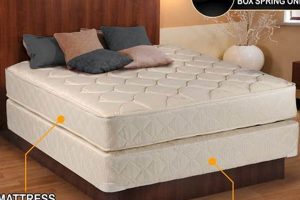
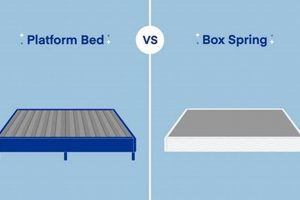
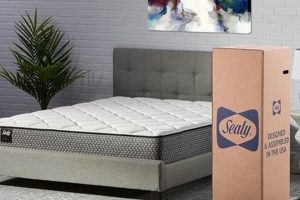
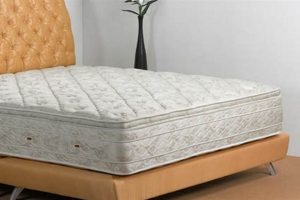
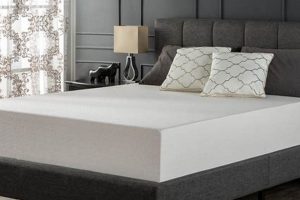
![Best Twin Mattress Box Spring [Deals] Sleep Better Now! Organic & Natural Mattress Buyer’s Guide: Non-Toxic Sleep Solutions Best Twin Mattress Box Spring [Deals] Sleep Better Now! | Organic & Natural Mattress Buyer’s Guide: Non-Toxic Sleep Solutions](https://mattressworldpa.com/wp-content/uploads/2025/07/th-3373-300x200.jpg)